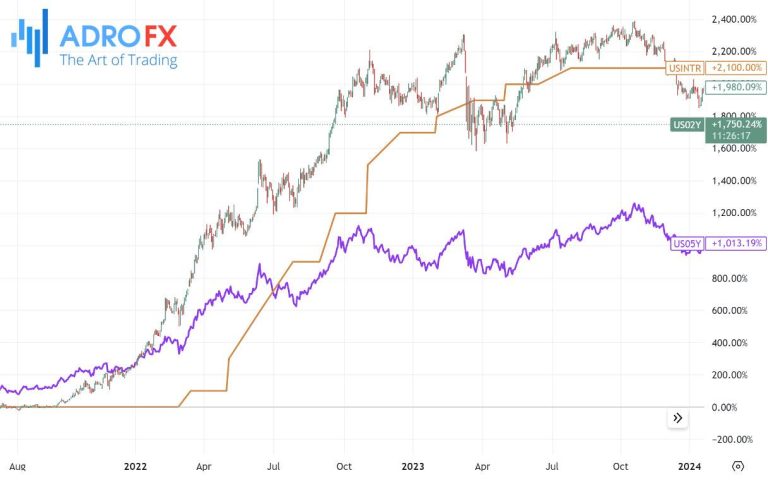Rising interest rates are rippling through global markets, reigniting volatility and testing risk appetite across asset classes. Equities have come under pressure, government bond yields have climbed, and the dollar has firmed as investors price a higher-for-longer policy path amid persistent inflation and firm central-bank messaging.
The shift is tightening financial conditions worldwide, pushing up corporate borrowing costs and squeezing rate‑sensitive sectors from real estate to private credit. It is also exposing vulnerabilities in emerging markets reliant on external funding, while sharper currency moves complicate trade and commodity flows.
With policy trajectories diverging among major economies, the stakes are high: can tighter money tame inflation without derailing growth? For now, the repricing is redrawing winners and losers across stocks, bonds, currencies, and commodities-and resetting the contours of risk for the months ahead.
Table of Contents
- Liquidity tightens as government bond yields climb and credit spreads widen
- Dollar strength deepens stress in emerging markets and weighs on real estate homebuilders and small caps
- Tilt toward short duration high quality bonds raise cash buffers hedge currency exposure and ladder maturities
- In Summary
Liquidity tightens as government bond yields climb and credit spreads widen
With benchmark sovereign yields pressing higher and risk premia resetting, dealers report thinner depth across cash rates and credit as market-makers ration balance sheet and repo haircuts edge up. Funding curves steepen, commercial paper rolls at elevated prints, and primary issuance windows narrow-particularly for lower-rated borrowers-while credit ETFs trade at persistent NAV discounts. Volatility in rates options climbs, cross-currency basis turns more negative for USD funding, and key liquidity gauges-top-of-book size, turnover, and bid-ask gaps-deteriorate into the close, amplifying intraday swings and prompting systematic and liability-driven players to shed exposure into weakness.
- Rates: 10Y and 30Y yields break out; term premium estimates rise; repo specials squeeze collateral.
- Credit: High yield and EM lead widening; investment grade reverses recent tightening; new-issue concessions increase.
- Equities: Duration-heavy themes lag; financials mixed as NIM support meets funding stress.
- Flows: Bond fund outflows accelerate; dealer inventories light; TRACE shows smaller average trade sizes.
- Derivatives: Swaption vol bid; CDS indices gap wider; futures basis swings on balance-sheet costs.
- Policy watch: QT proceeds; issuance calendars adjusted; liquidity backstops and the standing repo facility in focus.
Dollar strength deepens stress in emerging markets and weighs on real estate homebuilders and small caps
The greenback’s latest climb, underpinned by higher U.S. real yields, is tightening financial conditions worldwide as developing-nation currencies slide, reserve defenses intensify, and dollar funding costs bite; capital flows are reversing, sovereign risk premia are widening, and corporate refinancing windows are narrowing, while at home, housing-linked equities face affordability headwinds with mortgages at cycle highs and builders reporting softer orders and rising cancellations, and small caps lag mega-caps as floating-rate exposure lifts interest expense and margin guidance turns cautious.
- Market moves: DXY near cycle highs; EMFX under pressure; local rates spike; HY/EM spreads widen; Russell 2000 trails S&P 500; homebuilder ETFs extend drawdowns.
- Policy actions: FX interventions, emergency hikes, and reserve draws in select EM; U.S. focus on Treasury supply and term premium; BOJ and China policy headlines amplify volatility.
- Earnings lens: Negative revisions across builders and smaller domestically focused firms, with higher interest expense and slower volumes flagged on calls.
- Watchpoints: U.S. 10-year real yield, weekly mortgage applications, builder cancellation rates, EM reserves, cross-currency basis, and fund flow momentum.
Tilt toward short duration high quality bonds raise cash buffers hedge currency exposure and ladder maturities
With policy rates grinding higher and curves unstable, portfolio managers are rebalancing toward shorter-dated, investment‑grade debt to pare duration exposure, increasing liquidity reserves to weather redemptions and funding stress, deploying foreign‑exchange hedges to stabilize cross‑border returns, and staggering maturities to smooth cash flows and reinvestment timing as volatility persists across credit and currencies.
- Short IG tenors: Lower rate sensitivity with improved carry, option to reinvest at higher yields if tightening extends.
- Bigger cash sleeves: Buffer for margin calls and redemptions; dry powder for spread widening and primary market concessions.
- FX protection: Hedge ratios lifted as dollar strength and basis costs swing; focus on rolling 1-3 month forwards and collars.
- Laddered portfolios: Staggered maturities diversify “vintage” risk, reducing reliance on any single reset point as peak‑rate timing remains uncertain.
- Implementation: T‑bills, high‑grade corporates, and covered bonds in the 3-24 month bucket; liquidity screens and counterparty limits tightened.
In Summary
For now, the message from markets is unambiguous: higher borrowing costs are reshaping the contours of global finance, from sovereign debt to mortgages, and from equities to emerging currencies. The next tests arrive quickly, with fresh inflation and jobs data, corporate earnings updates, and guidance from the Federal Reserve, European Central Bank and Bank of England likely to set the tone into year-end. Investors will watch liquidity and credit conditions as refinancing needs build, while policymakers weigh the risks of overtightening against the costs of persistent inflation. Whether this is a controlled adjustment or the start of a more turbulent repricing will hinge on how long rates stay elevated – and how resilient growth proves to be on the other side.


